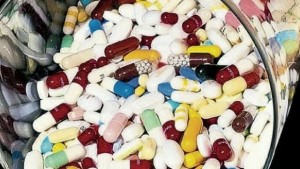 GEORGETOWN, Guyana — A regional pharmaceutical investigator that gathers counterfeiting intelligence information for one of the largest pharmaceutical companies in the world has indicated that between 25% to 35% of the medicines that are being imported into Guyana from India and Brazil may be fake and unsafe for medical use.
GEORGETOWN, Guyana — A regional pharmaceutical investigator that gathers counterfeiting intelligence information for one of the largest pharmaceutical companies in the world has indicated that between 25% to 35% of the medicines that are being imported into Guyana from India and Brazil may be fake and unsafe for medical use.
Allan Barrette, a third-party pharmaceutical investigator that handles counterfeiting investigations for British-based GlaxoSmithKline, one of the world’s largest pharmaceutical manufacturers, provided this data in response to a week-long query that was made by the Guyana Guardian.
From malaria treatment medication to Viagra pills, pregnancy enhancement pills, diabetic treatment regimes, and sexual enhancement pills, Barrette insisted that a large percentage of almost every medicinal drug in Guyana is fake.
According to the pharmaceutical investigator, Guyana, Haiti, Trinidad, and Jamaica are suspected to be the Caribbean’s largest importers of fake drugs from India, while Guyana may be a major transshipment point for fake pharmaceuticals that are coming out of Brazil.
Barrette, whose investigative jurisdiction covers Guyana, Latin America, and the Caribbean, explained that, while corrupt contractual arrangements for kickbacks are often the main tunnel by which counterfeit drugs would find its way into a government run healthcare system, private pharmaceutical importers who are motivated by greed and fast cash are widely believed to be the largest importers of fake medicines that will often find their way into the hands of desperate patients or right back into both private and government run hospitals with ad hoc or deliberately manipulated supply arrangements.
He added that currently available data show that both the Guyana government and private pharmaceuticals importers in the country are importing more than 80 percent of their medicines from India, and to a lesser extent, Brazil.
And in many cases, countries like Guyana are often incapable of recognizing what may be fake and what is real, as counterfeiters have become more innovative in their packaging and labeling standards.
Pointing to the scope of the problem, Barrette explained that counterfeit pharmaceuticals is estimated to be a $75 billion per year industry, which is aggressively guarded by politicians and large corporations that are benefitting, and who are often more than willing to cut the tongue of anyone who may be trying to curtail it.
But like the narco trade, one side always profits at the detriment of the other; as can be seen by the number of casualties from fake medication use worldwide.
According to Barrette, fake pharmaceuticals are responsible for hundreds of deaths annually, which are often mistakenly blamed on other factors such as the severity or resistance of the illness itself to treatment.
He drew reference to a case in Pakistan in which more than 100 patients had died over a few weeks (at one hospital) as a result of the adverse reaction from a fake TB drug, and another case where dozens of patients had died within a week in a Congolese hospital after using fake malaria drugs that did practically nothing to attack the parasite.
While these deaths were initially blamed upon the possible resistance of treatment or mutation of the illnesses that were being experienced by the patients, a World Health Organization investigation subsequently discovered that the patients were all being treated by a fake version of the correctly prescribed medication.
Similarly in India, more than 8,000 people died after minor surgeries over a five-year period at a single Himalayan hospital after they were given a fake antibiotic that was actually supplied by a major Indian pharmaceutical maker.
On account of this, Barrette asked what would cause the local population (in Guyana) to think that the same company or any other fake pharmaceutical manufacturer in India would not be willing sell another round of fake pharmaceuticals to the government or a private importer.
